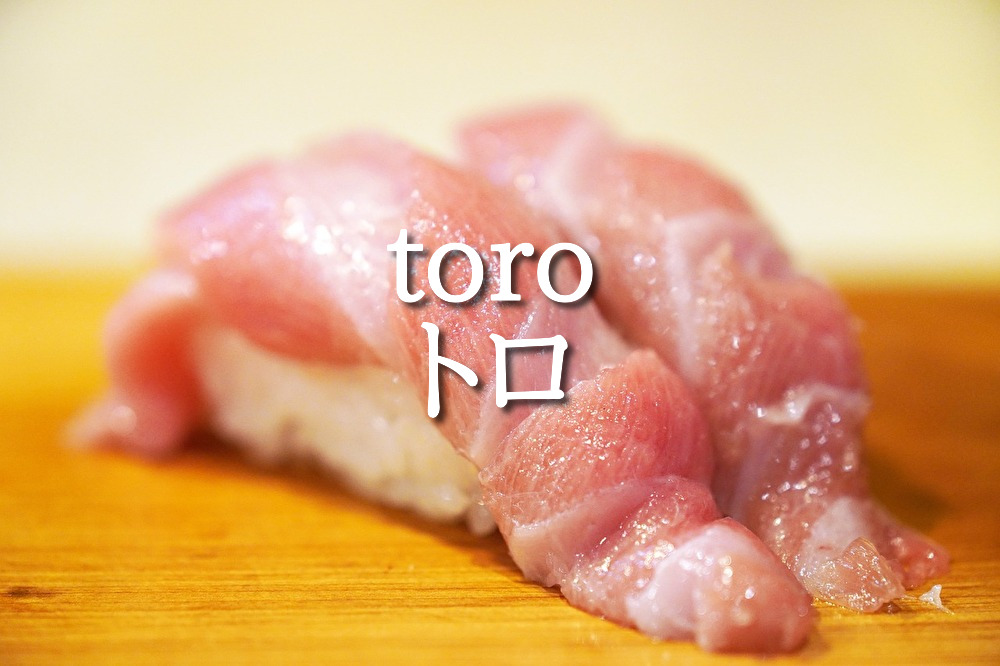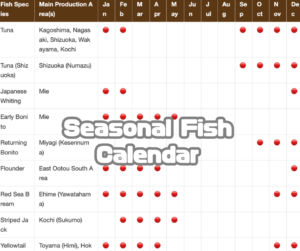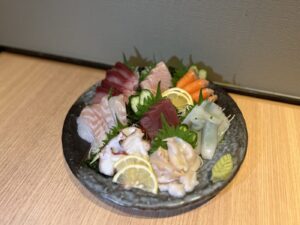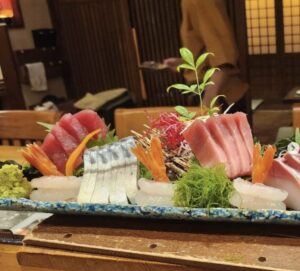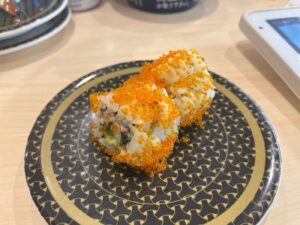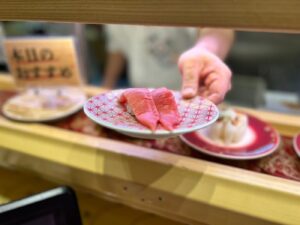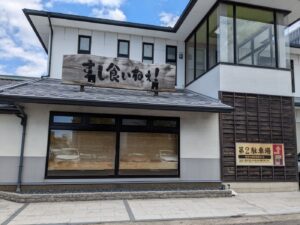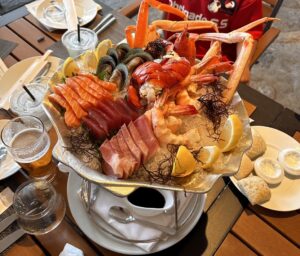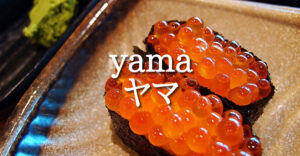What is sushi Toro?
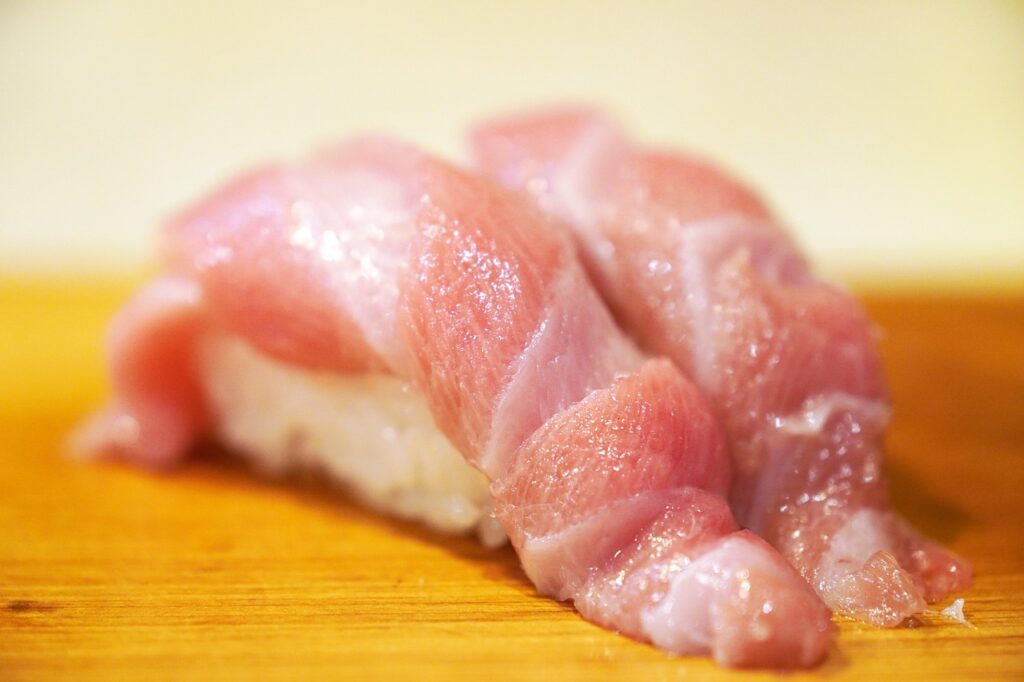
Let me introduce you to the industry term “Toro” used at sushi restaurants.
Toro is the belly of tuna.
The body of the abdomen of the bluefin tuna. The origin of the word comes from the state in which it is fatty and melts on the tongue, making it thick.
In the Edo period, tuna was considered a “tasteless fish” and was called “neko matagi,” meaning that even fish-loving cats would step over it, and it was sometimes thrown away. The reason for this is that Japanese people at the time did not like greasy foods, so they preferred the refreshing taste of white fish over fatty tuna. In addition, because freezing and transportation technology was not as developed as it is now, tuna, which tends to lose its freshness, would begin to spoil as it was transported to the fish market, making it difficult to eat it in a delicious state.
With improvements in preservation and transportation techniques, fatty tuna is now recognized as a high-quality cut. Not only tuna but also other fish, the abdomen has more fat than the back, the front part of the body has more fat than the back part, and the surface part has more fat than the inner part and is more expensive.
Names of different parts of tuna
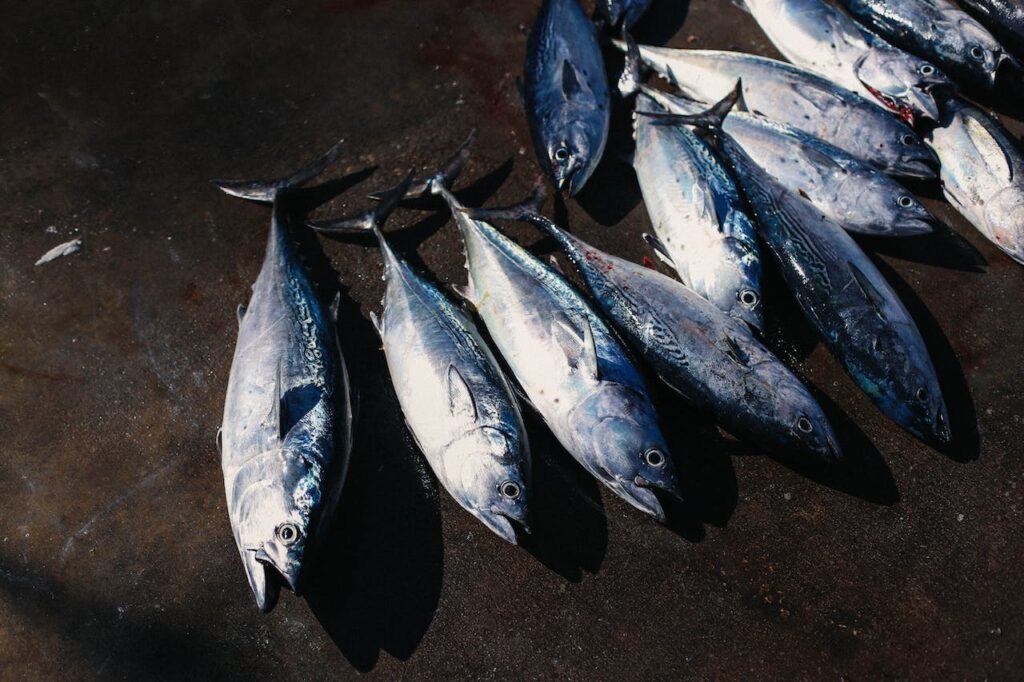
The taste of tuna varies greatly depending on the part, and the price also varies. The fat content differs between the dorsal and ventral sides, and the names vary depending on the part. Here we will explain the names and characteristics of each part of tuna.
- Otoro: Otoro is the fatty part of the belly. It is the most expensive part of tuna, and is treated as a high-quality sushi base at sushi restaurants. Its soft texture and melting fat flavor are what make it so appealing.
- Chutoro: Chutoro is found on the belly and back, and has a moderate amount of fat, excluding the fat, red meat, and chiai. Chutoro is the second most expensive part of tuna at sushi restaurants after Otoro, and its great appeal lies in its well-balanced fatty and lean parts, and its unique sweetness and moist fat.
- Akami: Akami is located on the dorsal side, has less fat, has a firmer flesh, and is low in calories and high in protein. At sushi restaurants, Akami is often referred to as “tuna,” and although its price is lower than Otoro or Chutoro, it has always been popular due to its unique heavy weight and chewy texture. It is also healthy because it is low in fat and high in water and protein.
- Hohoniku: A rare part where only two pieces can be taken from one tuna. It has a lot of fiber, and it has a soft texture and flavor just like meat when cooked, such as when making fries or steak.
- Kamatoro: The part behind the gills. Like cheek meat, this is a rare part of the tuna that only two pieces can be taken from one tuna. The fatty part of the kama is called “kamatoro”. It has no streaks and is easy to eat, and is so popular that some people say it tastes better than fatty tuna.
- Nakaochi: Nakaochi is the part that remains around the middle bone and is attached to the bone. It’s fatty and delicious. At sushi restaurants, it is also used as an ingredient in Negitoro.

